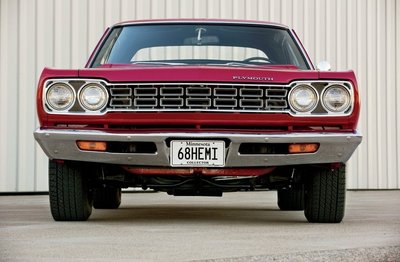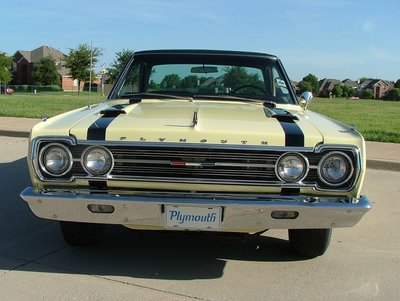- Local time
- 5:22 AM
- Joined
- May 14, 2011
- Messages
- 18,911
- Reaction score
- 38,106
- Location
- On the Ridge, TN


Not sure what that means. If you look at the Edelbrock chart, there is a wide range (27 different combinations) of metering rods & jets. Unless you are talking about what it came with from the factory ("stock").I wouldn't worry about plug color or jetting at this point, other than to check what size jets and metering rods are in it and compare that to what Edelbrock says should be in it.
I got what he meant - what the carb originally came with/shipped with.Not sure what that means. If you look at the Edelbrock chart, there is a wide range (27 different combinations) of metering rods & jets. Unless you are talking about what it came with from the factory ("stock").
Thanks Dave, much appreciated as always.Ed,
A carburetor that is too lean can also make your eyes water. I wouldn't worry about plug color or jetting at this point, other than to check what size jets and metering rods are in it and compare that to what Edelbrock says should be in it. I'm leaning toward that springless bottom hose being a good part of your problem. I use a Mancini 22" aluminum 2 row, 1.25" tube with one of their aluminum shrouds and a 17" 6 blade mechanical fan. 180 thermostat, green 50/50 with a bottle of Lucas Water Wetter. Runs right at 180-200, depending on whether it's 85* or 105* here.
Good comparison work, Don. There does appear to be quite the difference, eh?I just noticed that Plymouth made big changes in providing cooling airflow between 1967 and 1968. My 67 only has the grille and a small opening in the bumper over the license plate while the 68 has wide open bumper vents and a row of vent holes under the grille. They obviously knew there was a problem keeping the Hipo engines cool...
View attachment 432563 View attachment 432564
I'm wary of a much smaller diameter spring than the 1.75" hose actually getting drawn up into the pump suction, actually.1.25' spring is better than nothing. What about a hose with a built in spring.
If the out of box jetting is in there now I'd be prepared to go richer.
Yeah, I also found that one the other evening, but when I input my zip and checked on shipping, it said "No shipping methods are available for the current items and/or the given destination."
 ??
??They list the down flowing radiators sort of different than the crossflow ones, for whatever reason - but yes, the core is 25.5" wide and about 18" tall, just like it should be.Dont mean to butt in here but the link you posted for the radiator shows the core is only 17" wide.
Might want to get something thats actually 26" wide right?
65Fury440 and themechanic:
Gentlemen,
Thank you both for posting and forwarding your advice and experiences.
As you can see, I have gone ahead and fetched the Mopar reproduction of the "factory" 5-bolt shroud, hoping that it would get along with the Griffin radiator.
Homework paid off; they go together perfectly.
Now, we know a lot of Mopars didn't come from the factory with shrouds; in fact, a lot of big block cars (such as mine) came with the 22" radiator with no shroud!
Unless one got a/c and/or "max cooling" or towing packages, Ma did this a lot, it seems.
As article after article has said over the years, though, many of these cars were borderline from the get-go in regards to cooling and every one I've read, including some from Professor Ehrenberg himself, says get a dang shroud!
Well ok, I did - but here's something to consider on this:
The factory radiators these came with, brass/copper critters that they were - were their cores recessed a bit inside the tanks like the one I just took off mine?
(It was a 3 core and was about 2.5" thick; tanks are a hair over 3" wide).
The Griffin aluminum I just received has a core that totally fills the area between tanks; in other words, it's also 3" wide.
See where I'm going with this?
This means the shroud (and fan, for that matter) is now closer to the core.
I wonder if that shallower space between shroud housing and core makes a difference, especially with how dense this core is?
Only one way to find out - and to further handicap this experiment, I've decided not to hack away at the radiator support for now - yet - leaving it at the 22" opening.
This means IF things are still marginal with all the new stuff in there, I can always hack out about 3" more width in the support AND remove the shroud to see what difference it makes.
Good luck!! I am totally rootin for ya!!
Hey, I never said I was smart....
